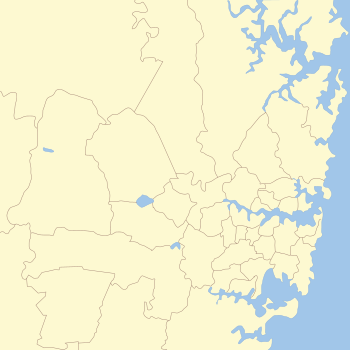Hills District facts for kids
Quick facts for kids Hills DistrictNew South Wales |
|||||||||||||||
|---|---|---|---|---|---|---|---|---|---|---|---|---|---|---|---|
|
|||||||||||||||

Suburbs
District
Suburbs
Bankstown
District
Sydney
The Hills District is a cool area in the north-western part of Sydney, New South Wales, Australia. It's also known as the Hills Shire or just the Hills. Most of its suburbs are found within The Hills Shire, which is a local government area. Some parts of the Hornsby Shire are also considered part of the Hills District.
The exact boundaries of the Hills District can change a bit depending on who you ask. For example, the Hills District Historical Society mainly focuses on the Hills Shire area. However, their studies sometimes include areas from Parramatta all the way to the Hawkesbury. Generally, the Hills District is west of Pennant Hills Road and north of Windsor Road. It stretches out to Boundary Road Vineyard.
People living in West Pennant Hills usually feel they are in the Hills District. But those in Pennant Hills, Thornleigh, and Westleigh often see themselves as part of the North Shore or Northern Suburbs.
This region gets its name because it has lots of hills! The land rises up, connecting the Sydney Basin with the Hornsby Plateau. You can see this along Castle Hill Road and Old Northern Road. Many suburbs here even have "Hills" in their names. These include Baulkham Hills, Beaumont Hills, Castle Hill, Pennant Hills, Rouse Hill, West Pennant Hills, and Winston Hills.
Contents
A Look Back: History of the Hills District
The first land grants in this area were given out not long after Europeans settled in Sydney. This was along an old Aboriginal path that went from Parramatta to the first prison town at Castle Hill.
However, much of the area really started to grow when the railway line was built. This line connected Strathfield and Hornsby. It opened on 17 September 1886. This was about 15 years before Australia became a nation.
People Living in the Hills District
In 2011, a count of people (called a Census) showed that 169,872 people lived in The Hills Shire. About 22% of these people were over 55 years old. This means it's a place where many older people live.
Nature and Weather
As its name suggests, the Hills District is higher up than most of the Sydney area. This high ground helps create more rain. Winds from the Pacific Ocean bring moisture, and when they hit the hills, the air rises and cools, making rain. This is called orographic rainfall.
Because of this, the Hills District gets a bit more rain than other parts of Sydney. It also creates a "rain shadow" for some places nearby. This means areas like Marayong and Doonside in the Blacktown district get less rain. This rainy climate was perfect for growing fruit. Farmers grew lots of stone fruit and citrus on the rich soil.
Sydney generally has a humid subtropical climate. But most suburbs in the Hills District have an oceanic climate. This is because their warmest month's average temperature doesn't quite reach 22°C (71.6°F).
Places of Worship
The Hills District is known for having many people who attend religious services. You can find many different religious groups here. For example, the Mormon's Sydney Australia Temple is in Carlingford. The Hillsong Church is also located in the Norwest Business Park.
There are many other places of worship in the district. These include churches for Anglicans, Baptists, and Uniting Church members. There are also Buddhist temples, Hindu temples, Chinese Christian churches, Islamic mosques, Spiritualist centers, Roman Catholic churches, and Sikh gurdwaras. This shows the wide range of beliefs in the area.
Getting Around: Public Transport
The Hills District has many bus routes. These are run by companies like Hillsbus, Busways, and Sydney Buses. There's also the North-West T-way, which is a special bus lane. It connects the Hills District to Blacktown, Parramatta, and Rouse Hill.
The Carlingford railway line is the only train line in the district. It's run by Sydney Trains. Trains on this line go from Carlingford to Clyde. To get to the city, you need to change trains at Clyde. People often say that public transport in the area could be better. Buses can be slow and don't come very often in some suburbs.
However, a big new train project called the North West Rail Link is being built. It is expected to open in 2019. This will greatly improve train services for the area.
Suburbs in the Hills District

